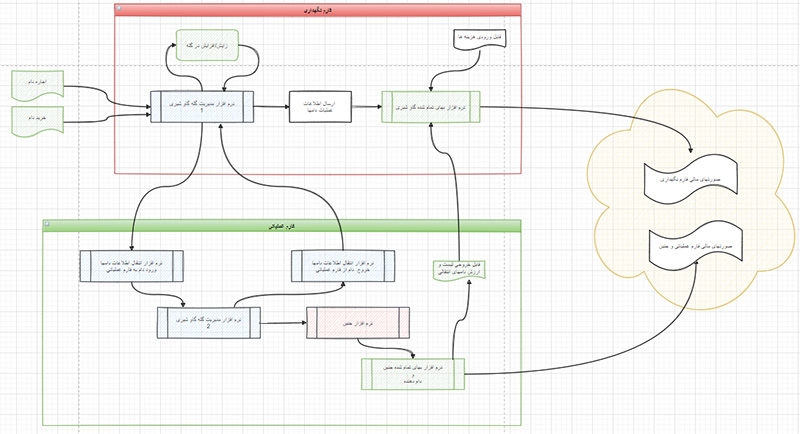Determining the most appropriate age of replacement for dairy cows
This study was performed to determine the most appropriate replacement age for dairy cows. The replacement of dairy cows with heifers is a well-managed decision to fulfil livestock profits.
According to this decision, calculating the present value of dairy cows that produce milk for several years is essential. If their present value is less than heifers, the replacement process occurs. Otherwise, dairy cows are maintained until the next course in high present value. Voluntary elimination of cows and well-timed insemination are two vital management decisions in dairy farming to gain long-term production of milk and suitable profit. The decision to voluntary elimination is a major challenge for the dairy herds and has a significant impact on herd economic performance. Making the right decision in replacing cows with heifers is known as one of the most important factors under the influence of milk prices, slaughtered livestock prices and replacement costs.
The results have shown that breeding of high-yielding dairy cows till the eighth-time pregnant is economically justified and keeping low-producing and medium-producing cows are not recommended. According to the results in dairy cows with low and medium production, the present value of livestock increases to the sixth-time pregnancy then decreases. In the high-productive group, the present value increase to the fourth-time pregnancy then decreases. Increasing the interval between the period of pregnancies leads to a decrease in the present value. Increasing the interval between the period of pregnancies leads to a decrease in the present value. As a result, it is observed that the elimination of dairy cows promoted.
Classification of dairy cows based on future income and expenses is the pivotal criteria in estimating of the present value to determine either elimination or maintain of dairy cows. It reflects the cow’s resistance to voluntary and involuntary removal.
The average life expectancy of a dairy cow is estimated at 4.75 years. This indicates the significance of the criteria for voluntary and non-voluntary cow’s elimination. It does reasonably result that the long-term lifespan of cows in the herd causes the duration of the keeping process. The average lifespan of herds depends on the annual elimination and replacement percentage and it is constant when herd composition is unchanged. The average optimal lifespan per year is obtained by dividing the number of dairy cows by the number of heifers replaced per year. An appropriate strategy for optimal replacement and elimination of cows will increase the profitability of the dairy farm. Increasing the ideal lifespan leads to elevate opportunities for voluntary elimination and thus increases the capacity of selection and reduces the annual replacement costs of cows per year. The ideal annual replacement rate, which is the contrary of the ideal herd’s average lifespan, is equal to the sum of the optional and non-optional elimination rates. The optimal annual replacement rate, which is the inverse of the optimal average age of the herd, is equal to the sum of the optional and non-optional removal rates. In this study, 21% is estimated as a baseline.
Milk price and replacement cost are both factors that have effect on ideal replacement decisions. In Iran, the ideal replacement decisions deal with inconsistent amounts of input and output prices and inflation rates. Therefore, the industrial dairy farms suffer from instability of milk prices and production costs. The import of low-cost meat reduces the slaughter value of eliminated cows which is accompanied by the high price of replacement heifers. The subsequent effect of high replacement rate is depriving from income source which are including sale of surplus heifers and decreases the average lifespan of herd. Also, the sale of surplus heifers often occurs at the age of 22 to 24 months when they are 5 to 7 months pregnant. Therefore, the replacement decision not only reduce rancher income but also require a lot of budgets to maintain pregnant heifer.
Applying cost price software (dairy cattle and small-scale livestock) of Modiran Tahlilgaran Sepahan company, users can calculate the cost price of each unit in desired time by conveying herd information from the herd management program and livestock financial information from the accounting department in the software.
The required financial information to register for this program includes the following:
The price of livestock that was eliminated in the course, the price of purchased and transferred livestock in the course, the costs in the special course including costs (labor and materials) and the ideal value of male livestock and the determination of milk tonnage in the course.
After determining the cost price, important criteria and management issue are calculated according to below:
The cost price of milk, the cost of growth, the total value of the newborn, calf cessation, cessation of milk, abortion sum, stillbirth total, end-of-term embryo, sold embryo, depreciation cost of male livestock, cost of cessation of bull production and etc.
In the process of calculating the cost price, if there is a mistake in recording livestock information in the herd management program, this software displays a list of problems with a description of the problem and a correction proposal for the user. After fixing the error and reloading the information, it is possible to calculate the cost.
Various criteria including representation of course information, display of form values, livestock course platform and general livestock platform index and pure economic value generated in the course are designed and the user can check the statistical and financial status of each livestock in herds at different periods.
As an example, in the general platform of livestock, statistical information such as (serial, livestock number, date of birth, gender, availability, latest livestock status, pregnancy status, date of removal, etc.) and financial information such as (price at birth, total cost, number of days of depreciation, number of years of depreciation, percentage of the value of abortion, etc.) can be seen and examined for each livestock in different periods.






